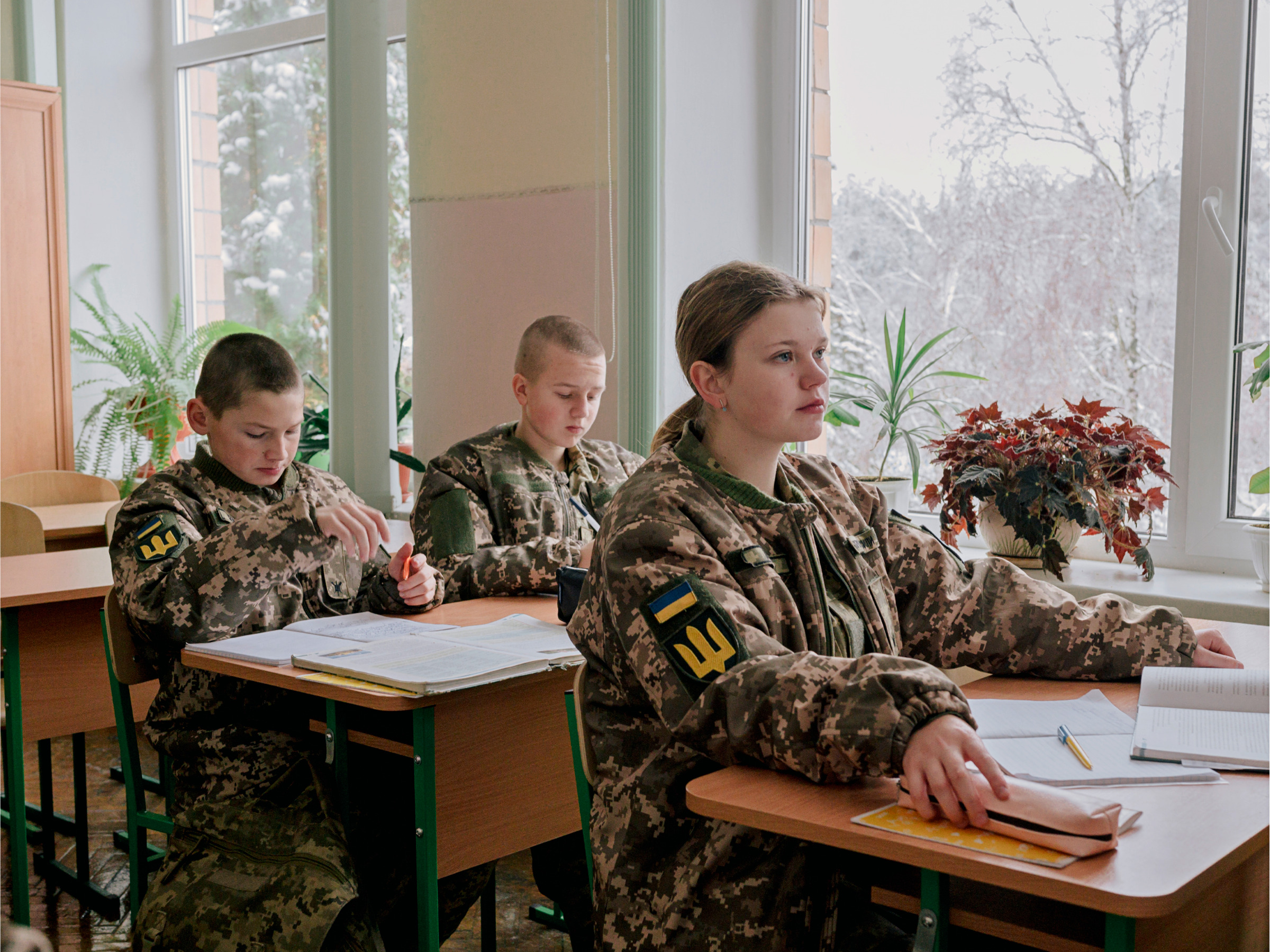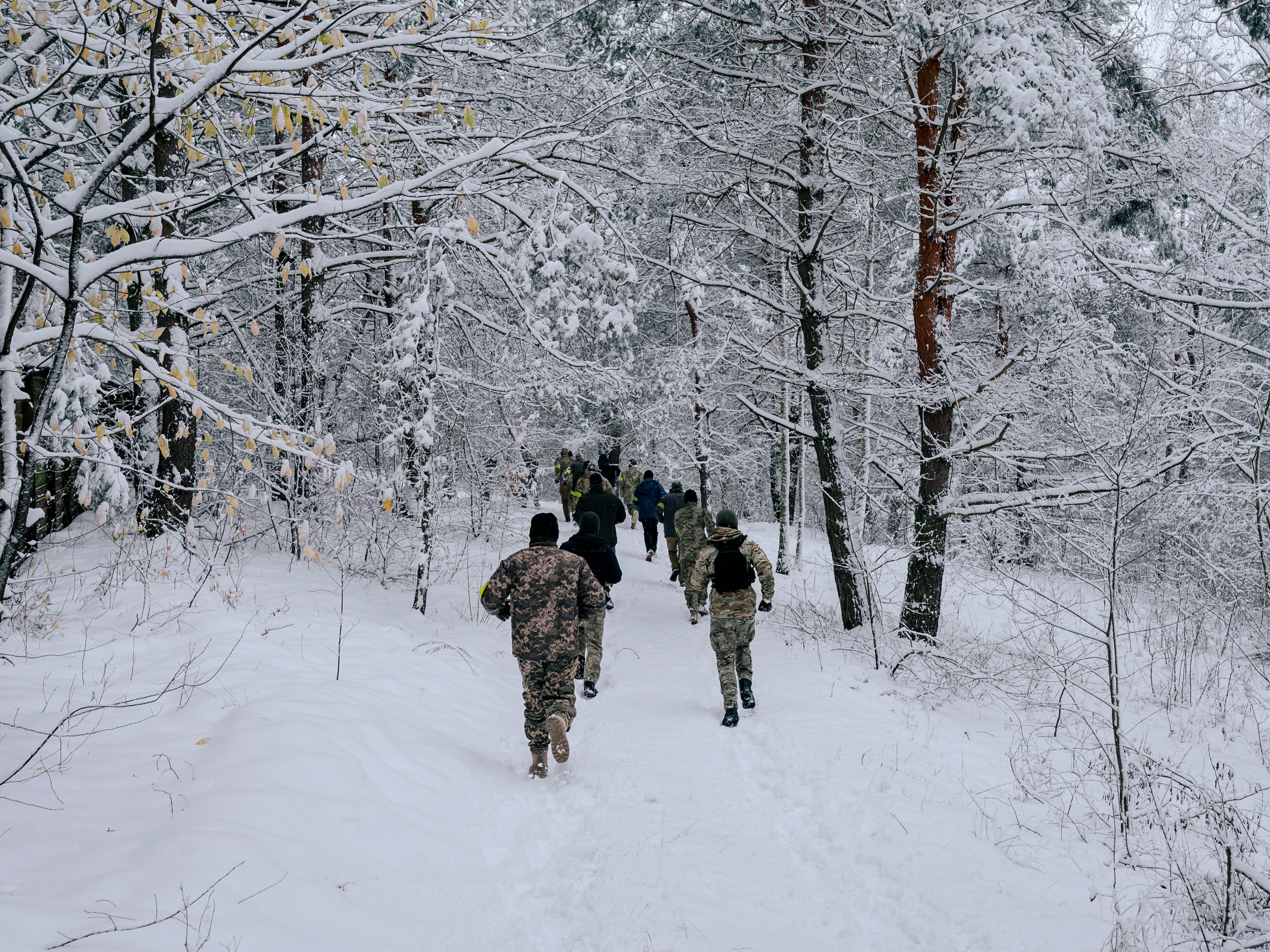During my years in the Marine Corps, I participated in military operations as diverse as night ambushes, amphibious raids, and helicopter assaults. All required intricate planning. Gathered around maps and satellite imagery, my colleagues and I had to consider all three of the dimensions in which war is typically waged: land, sea, and air. Once our plans were laid, there was always one last step before our mission: we would synchronize our watches. This ritual acknowledged the final dimension in which war is waged: time. Too often our analysis of a conflict neglects time as a space through which armies maneuver. But in Ukraine, as winter sets in and the war enters its second year, time will prove decisive.
Time is not on Ukraine’s side. A strategy of maximum pressure may provide the only path to victory, requiring Ukraine and its allies to remain relentlessly on the offensive this winter. Begin with the reality that while NATO support increases pressure on Moscow, it also places a weapon in Putin’s hand by lending credence to his claims that the West is at war with Russia. It increases the likelihood that Russia will expand the scope of the war, to include the use of nuclear weapons, a threat Putin habitually makes. A strategy of maximum pressure carries heightened risks, but the alternative is almost certain defeat.
If the efficacy of the Ukrainians’ September offensive is an indicator of their capability, there is reason to believe that subsequent offensives could lead to equally significant territorial gains. But success poses its own challenges. President Volodymyr Zelensky has maintained throughout the war that it will end in negotiations. Victory on the battlefield creates the route to the negotiating table; it is telling, however, that even though both sides said in late December that they were ready to talk, they did so only with conditions they must have known the other would not meet.
More from TIME
Read More: 2022 Person of the Year: Volodymyr Zelensky
Ukraine is fighting a war for national survival, while Russia is fighting a war of choice. This dynamic could shift the longer the war goes on. As backing down becomes less of a possibility for Russia, the stakes of the conflict increase for its leadership. This creates a dangerous tension in which neither Russia nor Ukraine can countenance any result but total victory. This could escalate the conflict for both sides, spiraling toward the total war that many fear.
In the early days of the war in 2022, NATO nations, led by the U.S., proved cautious in their support of Ukraine given concerns of escalation with Russia. However, Ukrainian battlefield successes coupled with Russian underperformance tempered those concerns. Heading into this winter, the Biden Administration has taken a notably more aggressive stance. The warm welcome Zelensky received in Washington in December preceded the authorization of a record aid package and the deployment of Patriot missiles. The White House seems to understand that the war is entering a new phase.
A Ukrainian winter offensive appears likely. It would take place largely in the east and would not only seize back terrain lost to Russian forces, but also keep those forces off-balance. This would deny the Russians the ability to rest and refit through the winter months. The Ukrainians are equally exhausted, but to be successful they will need to pull off the extraordinary dual feat of launching an offensive while simultaneously replenishing and refitting their own forces. If the Ukrainians can achieve this, they’ll be well positioned in the spring. That is when the war will be decided.

A lengthy war inherently favors Russia. It increases the odds that other authoritarian nations—such as Iran or China—will become more actively involved. Iran has already provided material support, like drones, to Russia. The longer the war drags on, the more likely it becomes that other nations will follow suit. It also makes it increasingly difficult for NATO to hold together an economic alliance against Russia. A swift resolution to the war in Ukraine isn’t only in the best interests of Ukraine, but also the stability of the world.
Although Putin, with his absurd claims of denazifying Ukraine, has often evoked the Second World War as a historical analogue, Zelensky would be wise to look at Finland’s victory over the Soviet Union in the Winter War as a strategic analogue. Just as Putin’s invasion of Ukraine was based on fears of NATO expansion, Stalin’s invasion of Finland in November 1939 was based on fears of a non-communist, nationalist Finland along the Soviet Union’s border, particularly given Hitler’s aggression in Western Europe. Also, the Red Army had launched a successful invasion of eastern Poland earlier that year, and Stalin—like Putin—had overestimated his military’s capability. He had also underestimated the ferocity of Finnish national pride.
Read More: Autocrats Are Weaponizing Globalization
The Red Army’s invasion of Finland, which relied on shock and overwhelming force, quickly faltered when Finnish resistance proved stiffer than expected. The Finns, when faced with the choice of digging in against the Soviets or launching a risky winter counteroffensive, chose the latter. Through a combination of partisan tactics and precisely deployed offensive operations, and with the aid of brutal weather, the Finns expelled the Soviets by March 1940.
Although the Finns outmaneuvered the Soviets on land, they also outmaneuvered them with regard to time. They understood that a limited window existed for them to achieve victory, and so they maintained the offensive through a punishing winter. The Ukrainians find themselves in a similar position today. A war that grinds on into a second, third, or even fourth year fatally disadvantages them.
Zelensky, unlike Putin, requires the support of an alliance to sustain his war. The member nations of that alliance are subject to the vicissitudes of their domestic politics. The war in Ukraine could just as easily be lost at an American or European ballot box as on the battlefield. Thus far, support for Ukraine has proved durable among allied nations. According to an October Ipsos poll, 73% of Americans believe the U.S. should continue to provide military aid. A similar poll, taken in Europe, showed that 61% of Germans and 63% of the French support the war. Those are strong majorities. But they are majorities that Russia is targeting.
The Russians have already launched their own winter offensive, one that targets Ukraine’s civilian population and infrastructure, as well as an economic one that takes aim at energy and commodity prices. Even if Russia’s economic warfare proves ineffective, support for Ukraine will eventually falter in the face of competing international priorities. The Russians know this. They will use the winter to replenish their forces, leveraging arms shipments from allies like Iran while also integrating conscripts into their diminished ranks. This buildup places urgency on Ukraine’s military operations.
Those operations must proceed with a coherent, integrated strategy, in which Ukraine and NATO share a similar vision of victory. Offensive operations in the dead of winter require significant resourcing, which the U.S. has until recently provided at a too sluggish pace that has struggled to keep up with Ukrainian demand. At every juncture—-whether it’s been the provisioning of Javelins, HIMARS, or Switchblade drones—-Ukrainians have deployed these weapons responsibly and with devastating effects. If the Biden Administration wants Ukraine to win, its window to arm it with weapons that will provide a decisive advantage is narrowing.
It is imperative that Ukrainian and NATO strategists use this winter to set conditions favorable for a massive Ukrainian counteroffensive when the weather turns. If the Russians are given time to rest and refit, they will be the ones to resume the offensive. This isn’t to say that Ukraine doesn’t also possesses inherent advantages. One of the most significant is counterintuitive: Ukraine possesses a manpower advantage over the Russians.
Throughout history, Russia’s vast territory has granted it an equally large population to draw from, typically giving it a numerical advantage. Both Hitler and Napoleon learned through bitter experience the dangers of awakening the proverbial Russian bear. Their armies were crushed by the resources Russia can hurl against an invader; except in Ukraine, Russia is the invader, and it is becoming difficult for Putin to mobilize his population the way his predecessors did. The past year has demonstrated that a mobilized army is no match against a mobilized society. It is Ukraine that possesses the numerical advantage today.
Russian conscription efforts, which have thus far proved lackluster, are designed to offset this imbalance. It’s doubtful that Russia will ever be able to mobilize an army—conscripted or otherwise—that strips the Ukrainian population of its inherent numerical advantage; however, the passage of time allows Russia to hone its conscription efforts while the Ukrainians continue to suffer difficult-to–replace losses, balancing the scales a bit more in Russia’s favor.
The operational specifics of a winter offensive are difficult to predict. The Russians have, thus far, demonstrated a remarkable lack of imagination and adaptability on the battlefield. Their centralized command structure has made it difficult for them to respond to a more fluid, decentralized Ukrainian military command. Partisan activities behind Russian lines in Zaporizhzhia and Luhansk Oblast have made it difficult for the Russians to consolidate their gains. The Ukrainians would be wise to capitalize on the resistance in Russian rear areas while they still can. The Russian strategy of warfare—one that is attritive and seeks to wear out their enemy—often creates risk aversion, in which commanders aren’t fighting to win so much as fighting not to lose. Reports of Russian logistical shortfalls, senseless frontal assaults, and the deaths of senior commanders all demonstrate Russia’s vulnerability to a well-planned and equally well-resourced Ukrainian offensive.
The Winter War, which history remembers as a Finnish victory, was ended at the negotiating table. Despite their battlefield success, the price of peace for the Finns—who had so thoroughly humiliated the Red Army—were territorial concessions that exceeded prewar Soviet demands. In a deal that has ensured their sovereignty, the Finns yielded nearly one-tenth of their territory to the Soviets. Ultimately, it proved a wise choice, and it kept generations of Finns out from behind the Iron Curtain.
In the months ahead, these kinds of decisions will confront Ukraine’s leaders. As the war enters this next phase, in the air, on land, and at sea, it is critical that the Ukrainians—and we, their allies—make wise use of the time we have left.
More Must-Reads from TIME
- Cybersecurity Experts Are Sounding the Alarm on DOGE
- Meet the 2025 Women of the Year
- The Harsh Truth About Disability Inclusion
- Why Do More Young Adults Have Cancer?
- Colman Domingo Leads With Radical Love
- How to Get Better at Doing Things Alone
- Michelle Zauner Stares Down the Darkness
Contact us at letters@time.com
